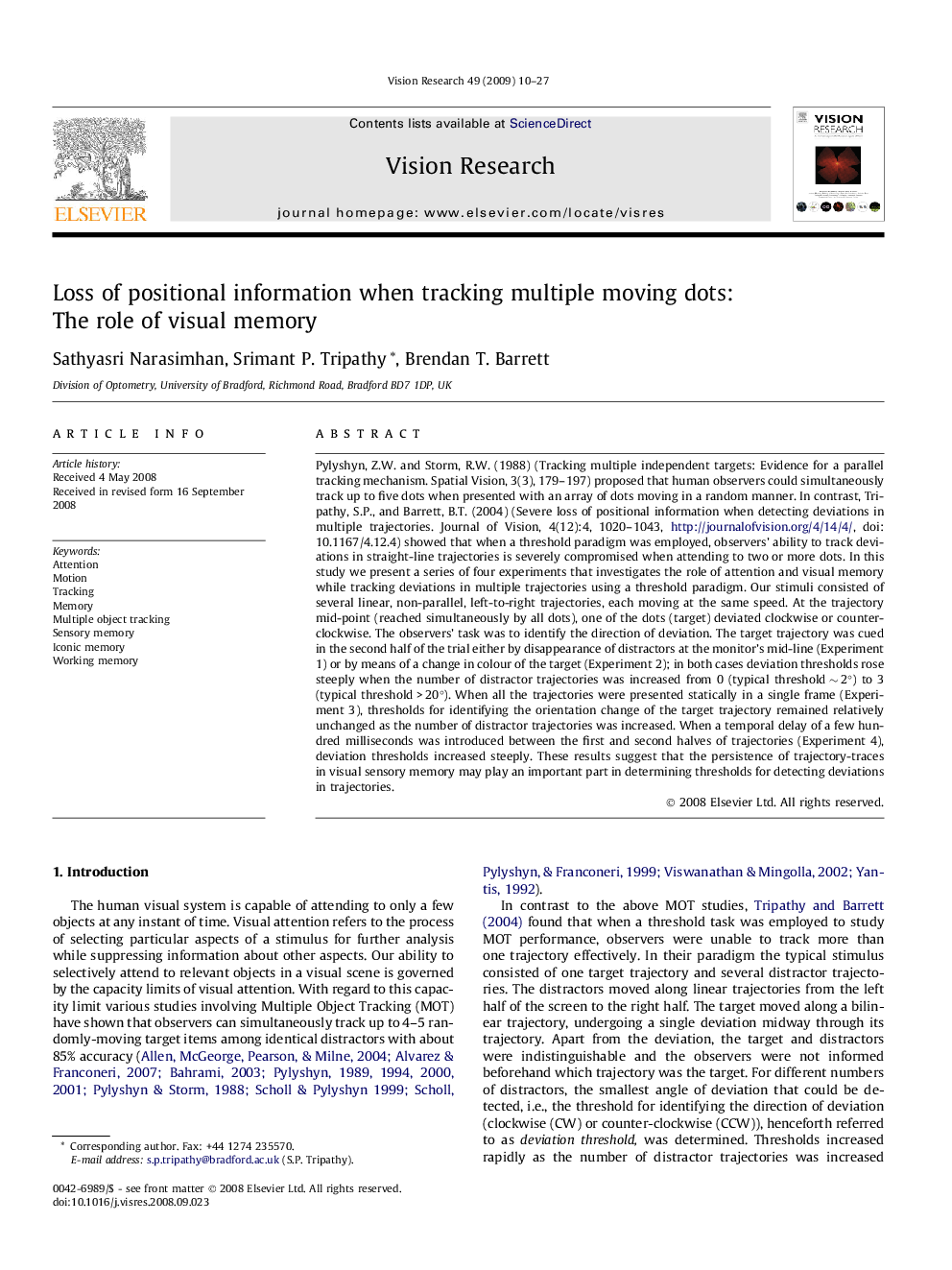| Article ID | Journal | Published Year | Pages | File Type |
|---|---|---|---|---|
| 4034951 | Vision Research | 2009 | 18 Pages |
Pylyshyn, Z.W. and Storm, R.W. (1988) (Tracking multiple independent targets: Evidence for a parallel tracking mechanism. Spatial Vision, 3(3), 179–197) proposed that human observers could simultaneously track up to five dots when presented with an array of dots moving in a random manner. In contrast, Tripathy, S.P., and Barrett, B.T. (2004) (Severe loss of positional information when detecting deviations in multiple trajectories. Journal of Vision, 4(12):4, 1020–1043, http://journalofvision.org/4/14/4/, doi: 10.1167/4.12.4) showed that when a threshold paradigm was employed, observers’ ability to track deviations in straight-line trajectories is severely compromised when attending to two or more dots. In this study we present a series of four experiments that investigates the role of attention and visual memory while tracking deviations in multiple trajectories using a threshold paradigm. Our stimuli consisted of several linear, non-parallel, left-to-right trajectories, each moving at the same speed. At the trajectory mid-point (reached simultaneously by all dots), one of the dots (target) deviated clockwise or counter-clockwise. The observers’ task was to identify the direction of deviation. The target trajectory was cued in the second half of the trial either by disappearance of distractors at the monitor’s mid-line (Experiment 1) or by means of a change in colour of the target (Experiment 2); in both cases deviation thresholds rose steeply when the number of distractor trajectories was increased from 0 (typical threshold ∼ 2°) to 3 (typical threshold > 20°). When all the trajectories were presented statically in a single frame (Experiment 3), thresholds for identifying the orientation change of the target trajectory remained relatively unchanged as the number of distractor trajectories was increased. When a temporal delay of a few hundred milliseconds was introduced between the first and second halves of trajectories (Experiment 4), deviation thresholds increased steeply. These results suggest that the persistence of trajectory-traces in visual sensory memory may play an important part in determining thresholds for detecting deviations in trajectories.
